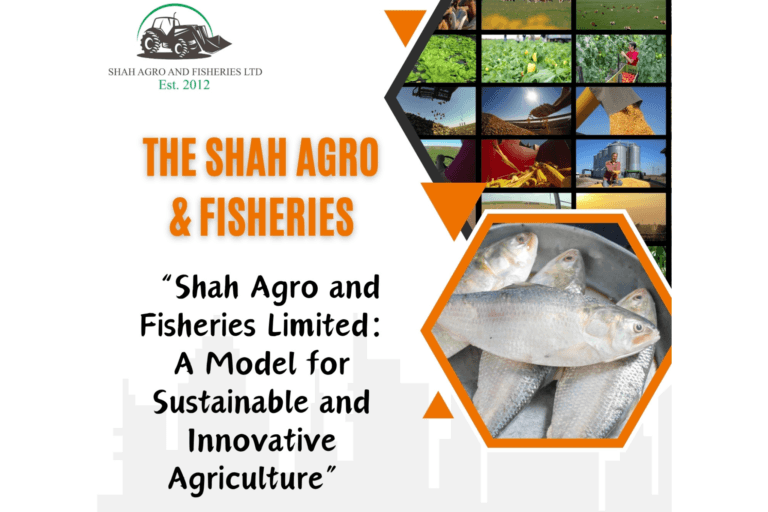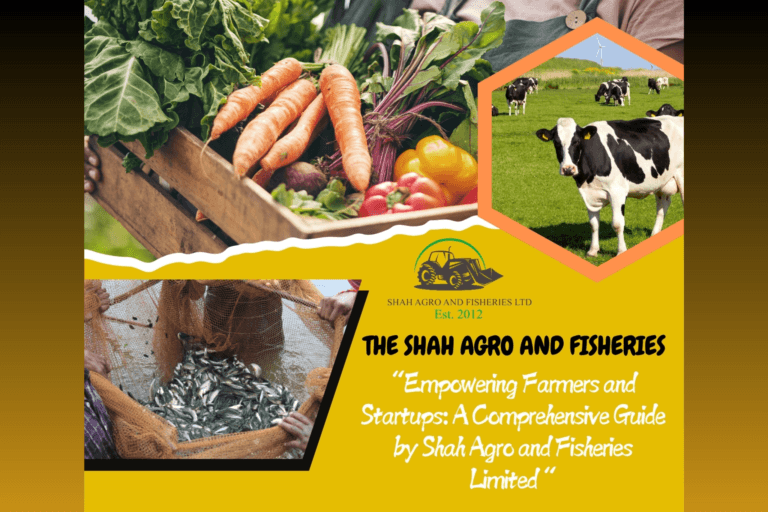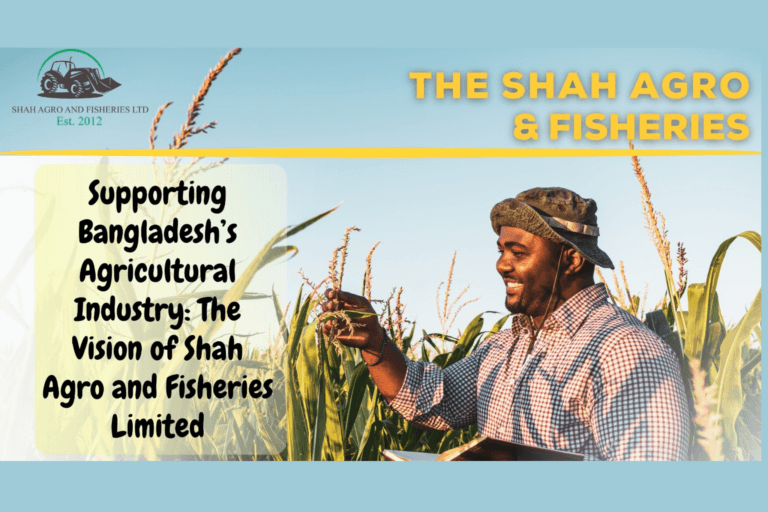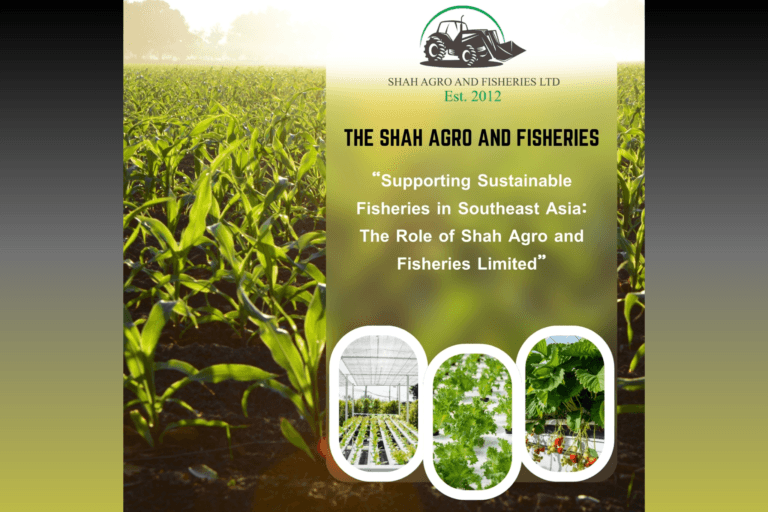Building a Model Agro Industry: Insights from Shah Agro and Fisheries Limited
In today’s fast-evolving agricultural landscape, sustainability, innovation, and economic viability are key to building a successful agro-industry. Shah Agro and Fisheries Limited (SAFL) is a shining example of how these pillars can create a thriving enterprise that benefits stakeholders and contributes to rural development and food security. This blog explores SAFL’s model structure and how it can guide others in developing a robust agro-industry.
1. A Vision-Driven Foundation
The foundation of any successful agro-industry lies in a clear and comprehensive vision. Shah Agro and Fisheries Limited began with a commitment to revolutionize agriculture and fisheries by integrating modern technologies with traditional farming practices. Their mission is simple yet profound:
- Produce high-quality agricultural and aquaculture goods on a sustainable basis.
- Strengthen local communities via skill development and job possibilities.
- Prioritize environmental protection throughout all operations.
Takeaway: Establish a vision that aligns with global agricultural needs, community development, and environmental sustainability.
2. A Diverse Product Portfolio
SAFL’s operations span multiple sectors, from crop cultivation to aquaculture. This diversification helps minimize risks while ensuring numerous revenue streams. Key areas include:
- Crop Production: High-yielding varieties of grains, vegetables, and fruits grown using sustainable farming practices.
- Aquaculture: Fish farming, focusing on species like tilapia, catfish, and shrimp, supported by advanced hatchery techniques.
- Agro-Processing: Value addition through processing units for packaged food products, oils, and fertilizers.
Takeaway: Diversification enhances resilience to market fluctuations and provides stability.
3. Sustainable Practices as the Core Philosophy
SAFL has embedded sustainability into its operations through:
- Efficient Water Management: Drip irrigation and recirculating aquaculture systems (RAS) reduce water usage.
- Organic Farming: Emphasis on reducing chemical inputs using organic fertilizers and bio-pesticides.
- Renewable Energy: Solar-powered equipment in farms and fisheries.
Takeaway: A focus on sustainability preserves natural resources, enhances brand reputation, and attracts eco-conscious consumers.
4. Technology Integration
SAFL leads the way in adopting agricultural technology to maximize productivity and minimize waste. Key initiatives include:
- Precision Agriculture: Use of sensors and drones to monitor soil health, crop conditions, and pest activity.
- IoT in Aquaculture: Automated feeding systems and water quality monitoring devices ensure optimal growth conditions for fish.
- Cold Chain Logistics: Advanced storage and transportation to maintain product quality from farm to market.
Takeaway: Leveraging technology improves efficiency, reduces costs, and ensures high-quality output.
5. Community-Centric Approach
SAFL’s model thrives on empowering the community, emphasizing a collaborative ecosystem.
- Farmer Training Programs: Workshops to educate farmers about sustainable practices and modern technology.
- Employment Opportunities: Job creation in rural areas through processing units, transportation, and retail chains.
- Profit-Sharing Models: Partnerships with small-scale farmers and fisherfolk, enabling them to share in the company’s success.
Takeaway: Engaging and uplifting local communities builds trust and ensures a sustainable supply chain.
6. Market-Centric Strategy
SAFL’s marketing and distribution strategy blends traditional and modern approaches.
- Domestic and Export Markets: Supplying fresh and processed products to local markets and exporting to international buyers.
- Branding: Establishing a recognizable brand through quality assurance and certifications like HACCP and ISO.
- Digital Presence: E-commerce platforms and social media campaigns to reach tech-savvy consumers.
Takeaway: A customer-focused approach ensures market penetration and brand loyalty.
7. Research and Development (R&D)
Continuous improvement is key to staying competitive. SAFL invests significantly in R&D for:
- Developing drought-resistant and high-yield crop varieties.
- Improving feed formulations for fish to enhance growth rates and reduce costs.
- Exploring innovative packaging to increase shelf life and reduce waste.
Takeaway: R&D drives innovation and keeps the agro-industry adaptable to future challenges.
8. Financial Prudence and Scalability
Shah Agro and Fisheries Limited exemplifies financial discipline through:
- Smart Investments: Allocating funds towards high-impact projects like greenhouses and advanced hatcheries.
- Scalability: Starting with pilot projects and scaling up successful initiatives.
- Public-Private Partnerships (PPPs): Collaboration with government bodies and NGOs for funding and technical expertise.
Takeaway: Financial planning and scalability ensure long-term growth.
A Blueprint for Success
Shah Agro and Fisheries Limited has set a benchmark for agro-industry development by combining innovation, sustainability, and community welfare. Aspiring entrepreneurs and organizations can learn valuable lessons from their model structure:
- Start with a clear vision and mission.
- Embrace sustainability and technology.
- Engage local communities as partners in progress.
- Diversify operations to mitigate risks.
- Invest in R&D for continuous improvement.
- As global challenges like climate change and food insecurity persist, agro-industries modelled after SAFL can help create a more sustainable and prosperous future.





